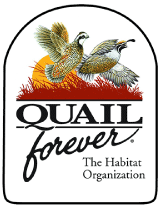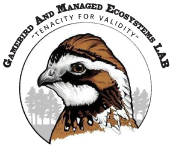ANCHOR
What is ANCHOR?
ANCHOR is a new conservation approach that builds Areawide Networks to Connect Habitat and Optimize Resiliency. The approach guides investments in strategic “anchor” locations to connect wildlife populations, enhance landscape resiliency, and strengthen rural economies. Unlike earlier approaches, ANCHOR integrates practices of conservation management by: (1) generating a library of species-specific habitat connectivity models at range wide scales, (2) ranking site selections to focus local action on the highest priority places, and (3) magnifying each local investment by placing it in the context of continental, national, and regional conservation outcomes. ANCHOR addresses the natural resource management challenges for the 21st century across terrestrial and aquatic landscapes.
What is the ANCHOR Approach?
SITE SELECTION
Connectivity ranking scores are calculated to determine the relative importance of specific public or large private lands to serve as anchors and build resiliency across working landscapes. Partnerships are formed to secure anchor sites across a landscape network and maintain habitat at those sites. Agencies, corporations, conservation partnerships and NGOs, and private landowners play a crucial role in ANCHOR by designating anchor sites to achieve the network vision, taking collaborative on-the-ground actions, and committing to landscape sustainability that meets joint wildlife recovery, social, and economic goals in rural and urban areas.
ESTABLISHING NETWORKS
 The ANCHOR approach identifies and protects important travel and migration corridors necessary for wildlife to adapt to changing land uses and climate impacts. New efforts are already underway to use the ANCHOR approach to benefit additional species and landscapes. The Trinational Monarch Conservation Partnership has joined forces with ANCHOR and will have their connectivity model tentatively completed by Summer 2025 to guide conservation delivery that will benefit monarch butterflies and other declining pollinators. This will be the second model added to ANCHOR's foundational science; the monarch butterfly model is being funded by the U.S. Fish and Wildlife Service's Center for Pollinator Conservation.
The ANCHOR approach identifies and protects important travel and migration corridors necessary for wildlife to adapt to changing land uses and climate impacts. New efforts are already underway to use the ANCHOR approach to benefit additional species and landscapes. The Trinational Monarch Conservation Partnership has joined forces with ANCHOR and will have their connectivity model tentatively completed by Summer 2025 to guide conservation delivery that will benefit monarch butterflies and other declining pollinators. This will be the second model added to ANCHOR's foundational science; the monarch butterfly model is being funded by the U.S. Fish and Wildlife Service's Center for Pollinator Conservation.
Map depicts ANCHOR vision for a network of land anchors that establish connectivity and support landscape resiliency across North America.
Under USDA’s Working Lands for Wildlife (WLFW) Northern Bobwhite, Grassland, and Savannas Framework, NRCS funded the foundational science to model a grasslands connectivity network using northern bobwhite as an indicator species. Collaborating with researchers from Conservation Science Partners and the University of Georgia’s GAME Lab, the team generated connectivity models for Eastern grasslands and savannas across the range of Northern Bobwhite. It soon became apparent that the ANCHOR approach could be replicated across North America to advance landscape conservation in a novel way. In the future, USDA can play an important role in enhancing the connectivity value of registered ANCHOR sites by prioritizing Farm Bill Conservation Program funds to areas identified by the partners as key to establishing habitat networks for grasslands, forests, and aquatic systems.
 LOOKING FORWARD
LOOKING FORWARD
With the successful demonstration of the ANCHOR approach through pilots efforts, next steps begin with establishing formal partnerships among willing partners to identify, manage, and connect high quality anchor sites to build a land conservation network. Partnerships support both the conservation delivery and science aspirations of ANCHOR.
Our vision is that ANCHOR will evolve to use a systems approach that incorporates economic indicators, climate science, and social sciences. Through these ongoing collaborations, ANCHOR will reconnect our broken landscapes to stabilize biodiversity losses and reduce environmental risks that impact working landscapes and under-served communities.
For more information on the ANCHOR approach or to become a partner contact:
info@landscapepartnership.org; version 1 released August 2024.
ANCHOR Partners (To Date)


























